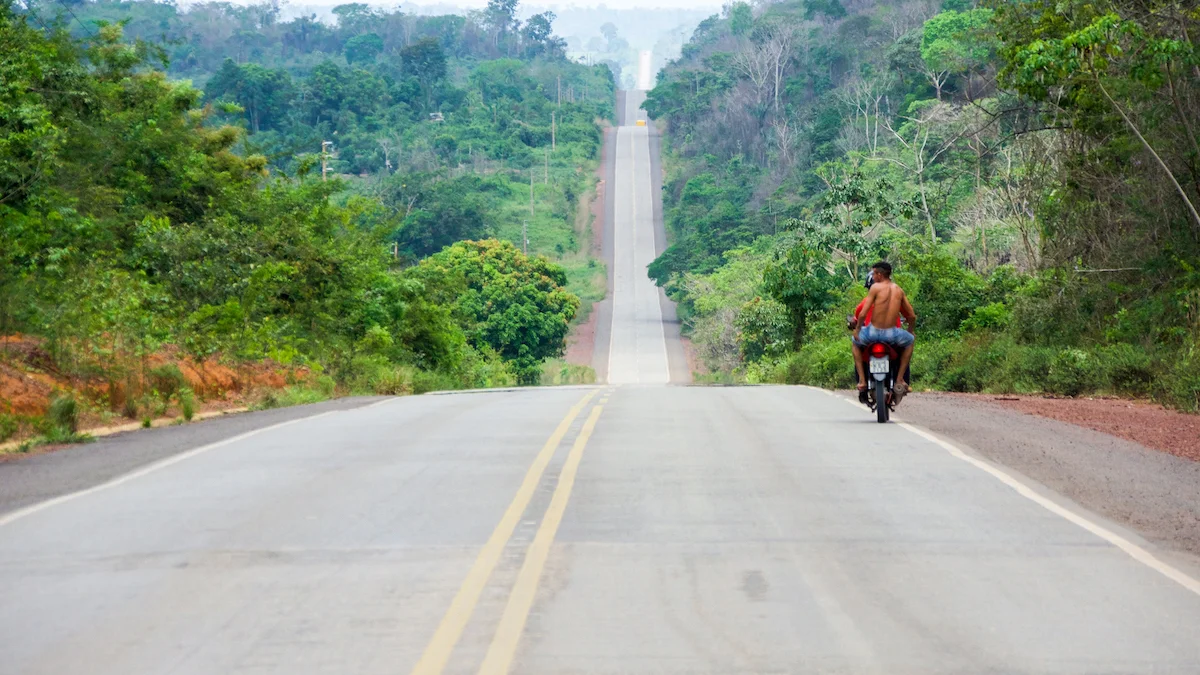The Road to Producing Beyond Fordlândia
— by Marcos Colón
In Summer 2016, as part of my dissertation research, I received a grant to travel to the Brazilian Amazon. Before this visit, the place was familiar to me only through literary sources, novels, travelogues and accounts from previous travelers who ventured to the region and tried to make sense of what had happened during the preceding century. My first encounter in the region was with the cities of Manaus and Belém where many of the authors whose works describe those cities as the beacon for development of the Amazon region. One of the authors who caught my attention was Mário de Andrade. In 1927 during his visit to the region he wrote in his journal (which later became a full-length book) a note about the arrival of Henry Ford in the area of the Tapajós river, a primary tributary of the Amazon. During my visit to the jungle that note brought the city of Fordlândia into focus and made it inevitable that I should pay a visit there.
A photograph of Henry Ford originally displayed in the first home built for him at Belterra in 1938. He was supposed to meet Brazilian President Getúlio Vargas at this home in 1940, but Ford did not attend the meeting. The image disappeared from the house and is now owned by a collector in the region.
As I became familiar with Fordlândia's history and current state of abandonment, a number of questions arose in trying to link up events of the past with the current state of affairs in the Amazon nearly a century after Ford’s attempted cultivation of rubber. I visited Belterra, the second city built by Ford; and observed how history was repeating itself, this time with the cultivation of soybean, another of Henry Ford's passions.
Beyond Fordlândia (2017, 75 min) uses both historic and contemporary images to document the ecological, social and political impact left by Henry Ford on the Brazilian Amazon, which now, ninety years later, is paving the way from jungle to the industrial scale production of soybeans.
Soybean fields in Belterra.
Soybean Production in Contemporary Brazil
Government records show that in the 2016-2017 harvest, Brazil exported 63.5 million tons of soybeans, ranking it first in the world followed next by the United States, which exported 58.5 million tons. Brazil is currently the world’s number one soybean exporter, at the expense of the Amazon rainforest.
In May 2017, a “Soy Moratorium” agreement, which when first signed in 2006 had been the first voluntary, zero-deforestation in the tropics accord, was renewed indefinitely. The moratorium, along with its property registration mechanism (required by the Brazilian Forest Code), were intended to prevent further expansion of soybean production on the rainforest lands. The promise not to buy soybeans grown on lands deforested in the Brazilian Amazon was unsuccessful in the past decades. Recent data show that direct conversion of the forest to soybean production contributed to record rates of deforestation. In 2014, nearly 25% of Amazon deforestation in Mato Grosso and 32% in Pará occurred in registered properties. Thus, property registration alone does not safeguard the forest. The problem that agribusiness poses in the Amazon is whether human being or the forest will survive.
A farmer in the market in Santarém
Tens of thousands of acres of rainforest around Santarém were cleared for rice and soybeans in a region that had already lost more than 30 percent of its native trees to loggers. A few hundred miles west in Amazonas the water level sank to unprecedented levels, closing ports and crippling river traffic, resulting in the government declaration of a state of emergency. The jungle’s weather machine and water equilibrium system seemed broken. Even the most hardened Amazonian seem frightened. The newest dream of agricultural riches may have gone the way of Fordlândia, but this time the essential health of the rainforest region seems to have gone with it.
Beyond Fordlândia captures the voices of those from widely divergent walks of life who have been directly impacted by the disruption of the rainforest. Farmers, teachers, city administrators and doctors give their accounts of the negative effects of soybean monoculture on the rainforest environment and on the Amazonian people.
Beyond Fordlândia shows that nine decades before Ford's arrival in the Amazon, new developers dared to take on the jungle again. They are now making the same mistakes, but on a more massive scale. Will Cargill Inc., (the Minneapolis commodities giant) succeed in the replacement of the great diversity of the Amazon biome by soybean monoculture?
There is an old saying on the Amazon, often uttered with a cynical tilt of the head. Deus é grande, mas o mato é maior: “God is great, but the forest is greater.” While Brazilians also like to say, “God sees the truth, but sometimes forgets,” my observation is that the jungle never forgets. One way or another, nature always win. Will be this time be another such case?

